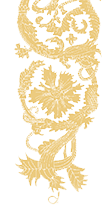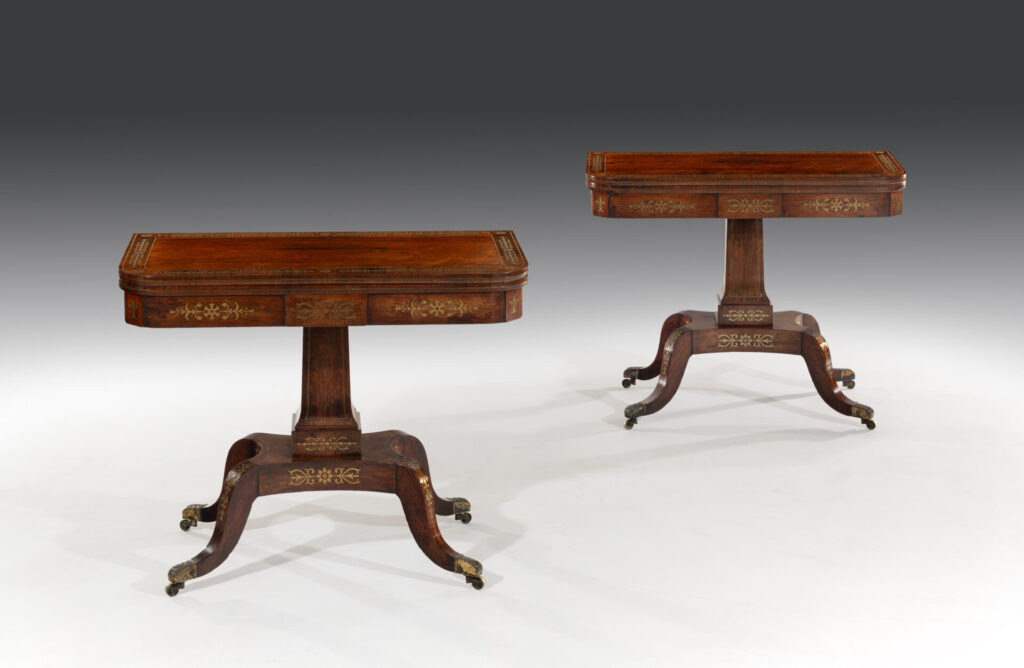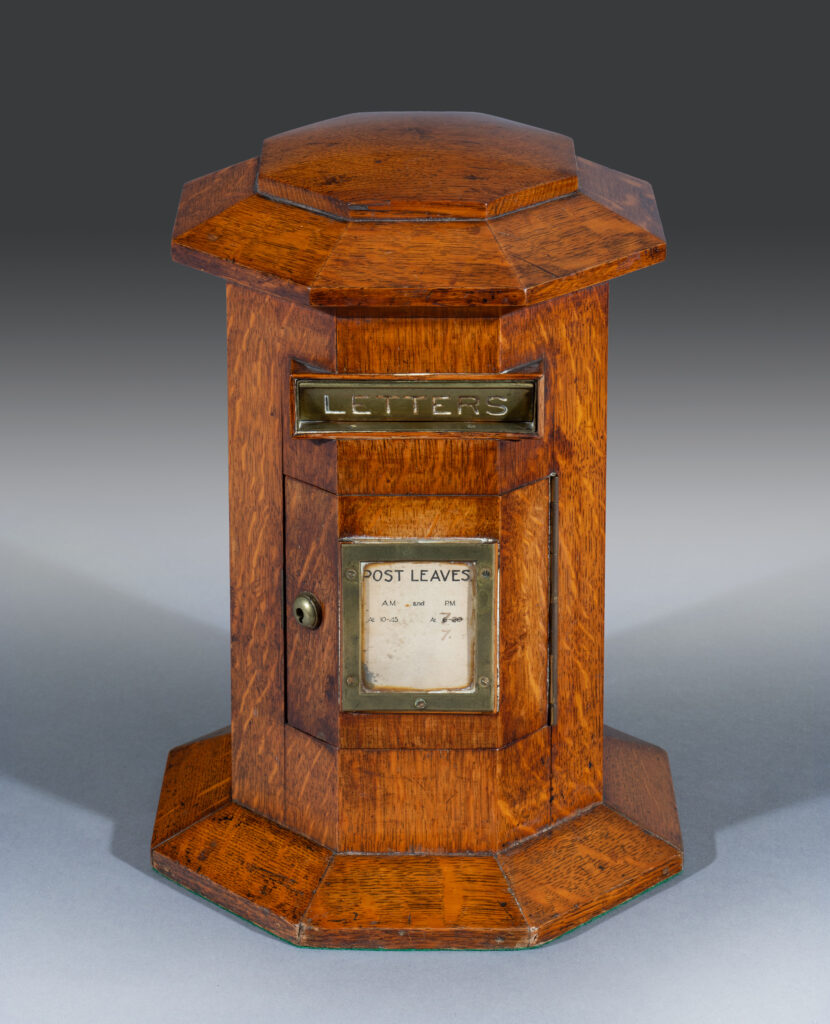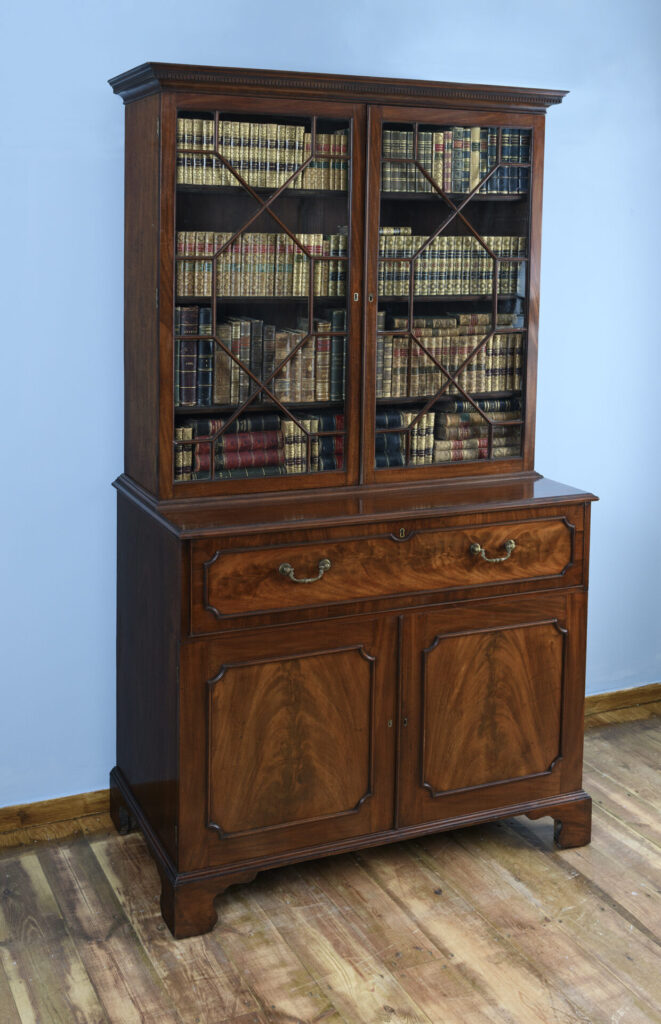Mid Victorian Burr Oak 12 Seater Dining Table
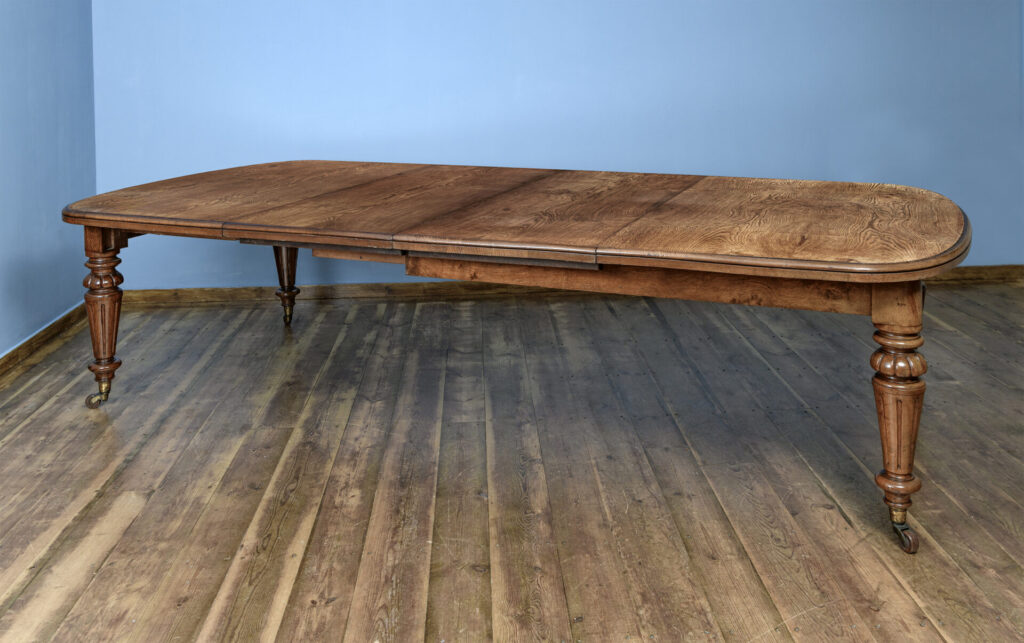
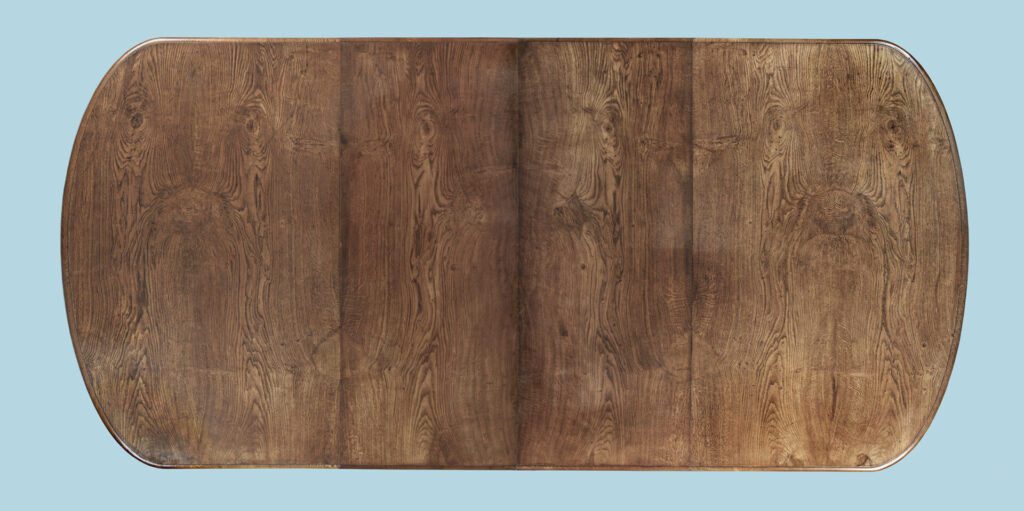
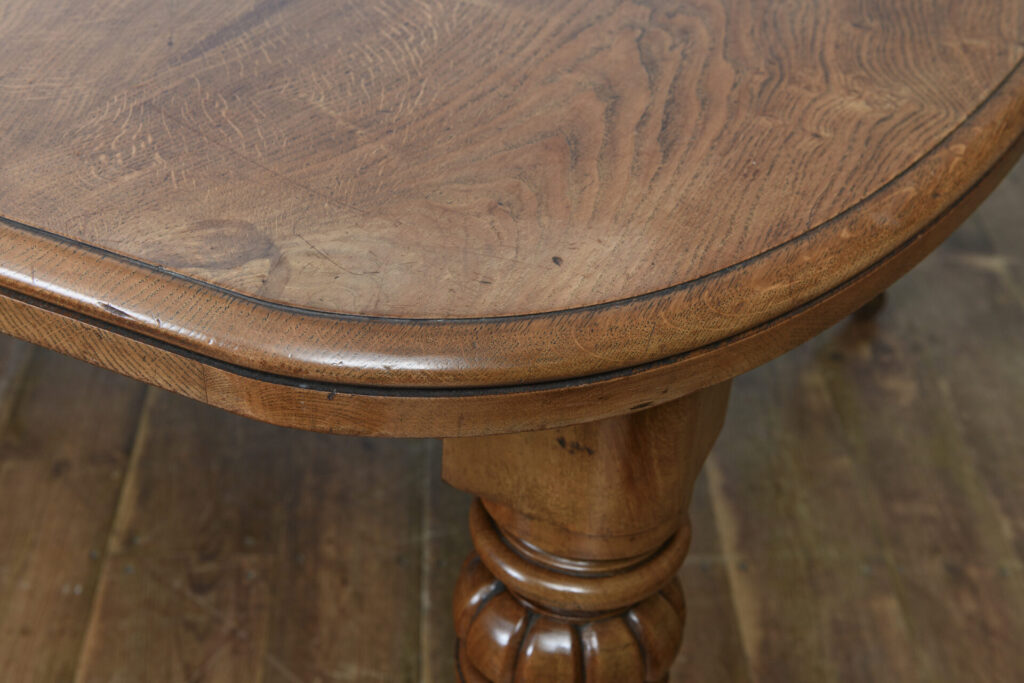
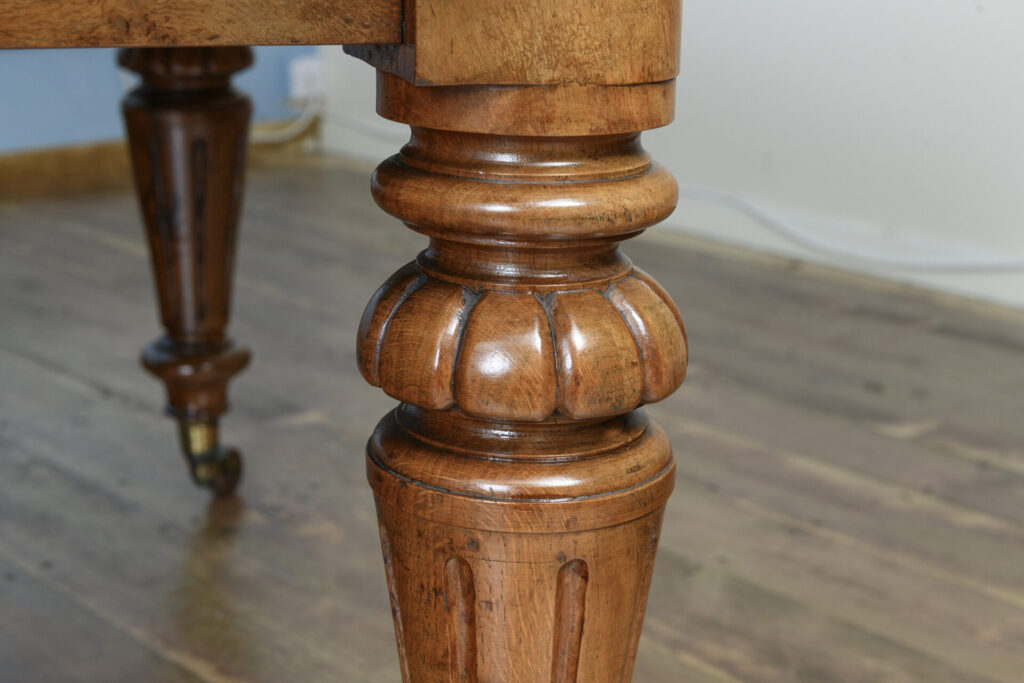
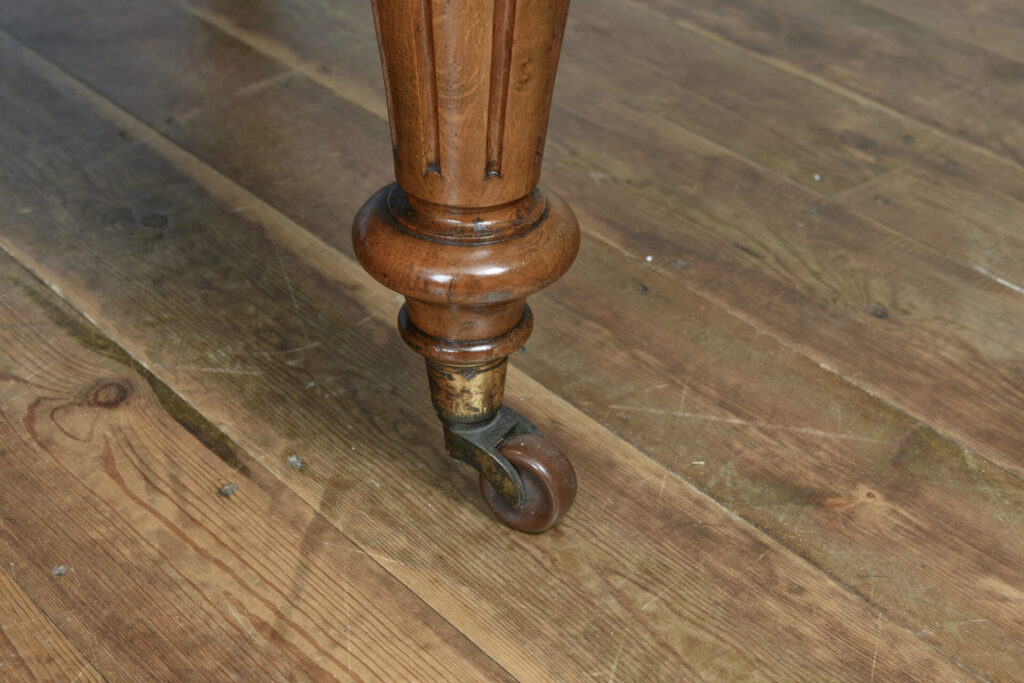
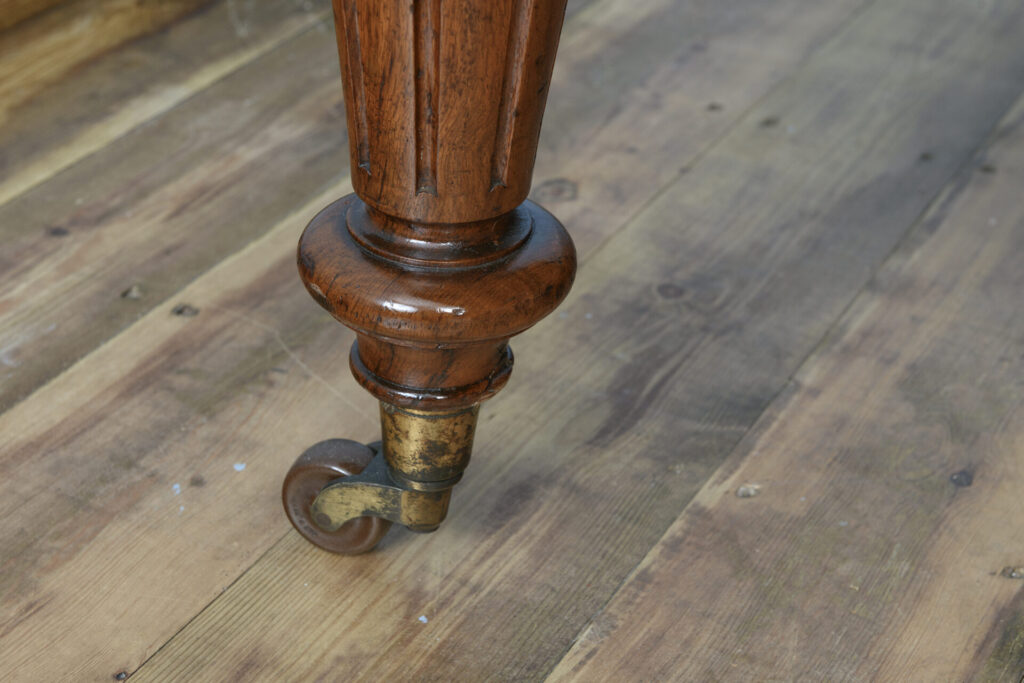
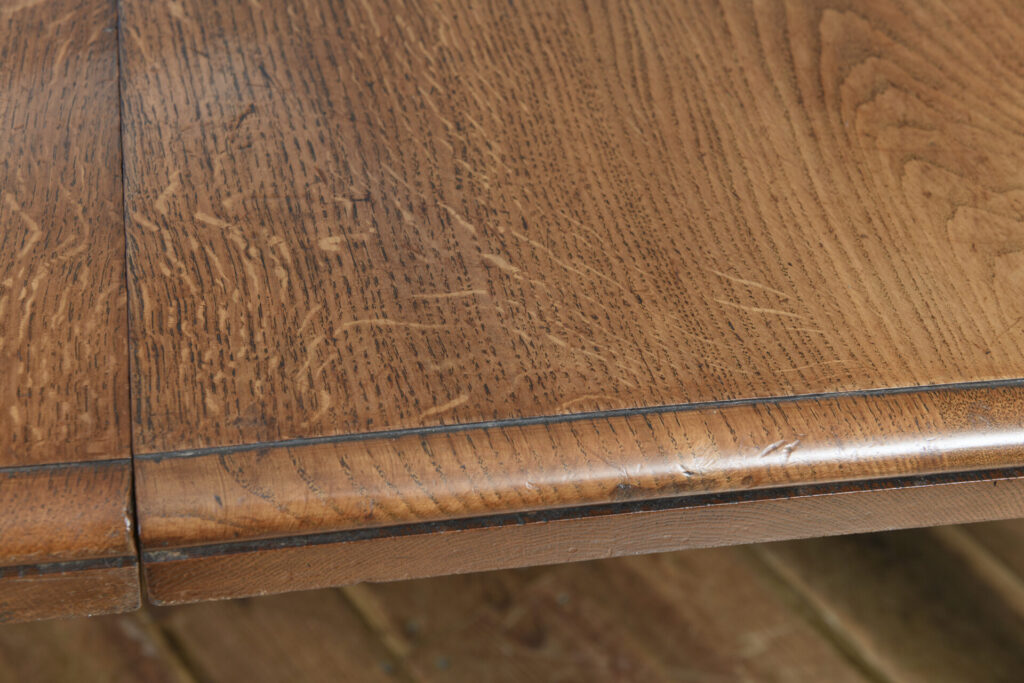
Mid Victorian Burr Oak 12 Seater Dining Table
English
circa 1840 - 1850
19th century mid-Victorian English burr oak 12 seater telescopic extending dining table.
The D-ended rectangular top with a double moulded edge is made with two original leaves that can be added or subtracted depending on the size needed.
The table is fitted and extends on a corkscrew mechanism that allows the telescopic oak frame to extend with the use of the original wooden hand winder. The table is raised on four reeded and fluted turned legs with brass caps and ceramic castors that are impressed with the maker's mark, 'Cope & Collinson Patent'.
The table retains a good colour and the medullary rays from the quarter-sawn cut of the oak produce the attractive ‘tiger grain’ pattern to the top which adds to the overall quality of the table.
The table has possibly only ever had two owners from manufacture: Butler and Tanner from new, who used the table as a board room table, and then a private owner until the present day.
Butler & Tanner was a prominent printing and bookbinding company in Frome, Somerset, established in 1845. They became known as Britain's oldest and foremost colour printers. The company initially moved to a new site in 1907 with Butler and Tanner printing the first Penguin Book in 1937, Ariel, for Allen Lane and then using the first four-colour Roland press in 1987. In 2007, it was purchased by Dennis Publishing, becoming Butler, Tanner & Dennis, but ultimately closed in 2014.
Literature
Cope and Collinson were a prominent British manufacturer, particularly known for their high-quality furniture castors, often stamped with 'Cope & Collinson Patent'. Their castors were frequently found on fine antique furniture from the Victorian era, especially pieces made by well-known firms like Gillows. The company's reputation for excellence extended to other hardware as well, including locks.
Dimensions
Height 74.50cm (29.33 inches)
Width 137.00cm (53.94 inches)
Length 300.00cm (118.11 inches)
Stock No: 11695
£3,950.00
In-stock